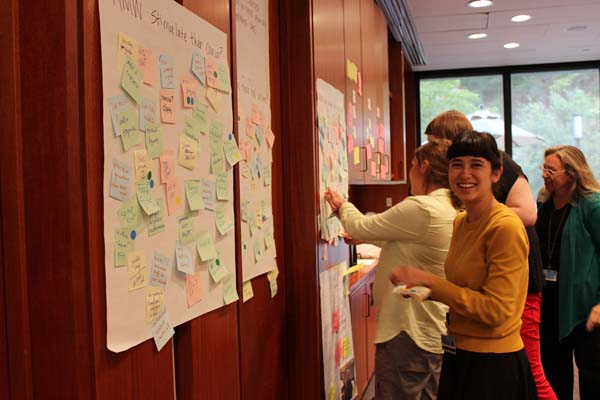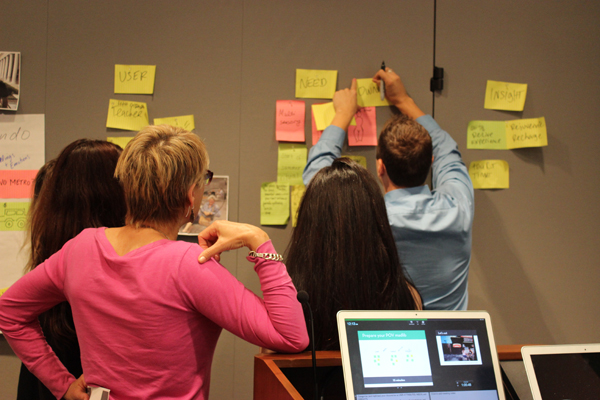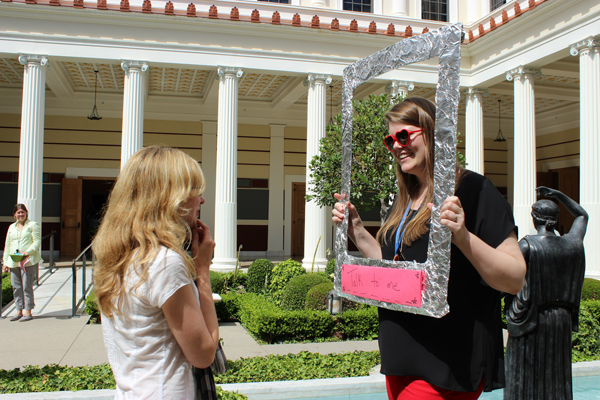By Lauren Valone
Design thinking is a big buzzword these days, and is being applied in both corporate and not-for-profit settings. However, it is much more than simply thinking like a designer might. Indeed, design thinking is about combining analytical and creative methods to arrive at innovative solutions. Dana Mitroff Silvers, former Head of Online Services at the San Francisco Museum of Modern Art and Founder of the consulting practice Designing Insights and the website Design Thinking for Museums, describes design thinking as a, "a human-centered process for problem solving and innovation." In this edition of the Professional Development Corner, Dana discusses the relationship between design thinking and museums.
Why is design thinking important for museum professionals?
Design thinking provides a new way for museum professionals to approach the development of programs, exhibitions, experiences, services, and products, both digital and analog. Design thinking is a five-step process (empathize; define; ideate; prototype; and test) and it's also a mindset. While some professionals may find some of the principles and methods familiar, most museum professionals I train in the process find it radically different from traditional top-down, siloed, and overly analytical approaches employed in many museums.

Staff from the J. Paul Getty Trust in a design thinking workshop. Photo by PM Carlson.
How can design thinking impact museums at a visitor level?
Design thinking is about putting the people for whom you are designing front and center, hence the term "human-centered.” This means putting the visitor at the center when developing anything that impacts the public, but can also mean putting staff at the center when developing new internal processes or policies. Design thinking is grounded in empathy, and the first step of the process is developing a nuanced understanding of the needs and motivations of the user for whom you are designing, and then developing solutions that address those needs. So in terms of how it can impact museums at a visitor level, this means developing new programs, services, and products that are truly visitor-centered.
Can design thinking be employed by all disciplines of museum professionals?
Yes, mostly. From human resources to curatorial, all types of museum professionals can employ design thinking methods and mindsets in their work. However, the biggest barrier to adopting the process is around resistance to new ways of working. I find that resistance to design thinking has less to do with one's job function and more to do with one's attitude towards new ways of working, openness to failure, tolerance of ambiguity, and acceptance of imperfection.

Staff from the J. Paul Getty Trust in a design thinking workshop. Photo by PM Carlson.
How can design thinking help improve a person's day-to-day work life?
I can give you an example: today I was speaking with a colleague at a major US art museum who told me that after the last design thinking training I led at her institution, her strained professional relationship with a colleague has been repaired. In the design thinking workshop, she and this colleague successfully collaborated together on a team. They have been meeting regularly for lunch since the workshop, and are planning a co-hosted gathering between their departments. I hear this often after I introduce teams to the design thinking process; the inherent collaboration of the process creates more resilient and collaborative teams.
How can you get reluctant colleagues to join in the process of design thinking?
I encounter reluctant colleagues in every museum I work with! And you can't win them all, but I'd say it's usually 3 out of 4 who come around. The best way to draw in the doubting and reluctant staff members is to have them participate in a full design thinking cycle and experience the power of the process, from building empathy for users to building rough prototypes. And I always tell people that you can't understand design thinking by listening to a lecture; you have to experience it. You have to get out of the conference room and into the galleries, and interact directly with visitors.

Staff from the J. Paul Getty Trust in a design thinking workshop. Photo by PM Carlson.
How can design thinking help further the future of museums?
Design thinking has the potential to impact the future of museums by giving museum professionals a flexible and scalable method for connecting with visitors, and with each other. It's a process that encourages openness, failure, iteration, and experimentation, and I think those mindsets are equally as powerful as any new trends or technologies.
If you would like to learn more about design thinking, join Dana's WMA 2015 Workshop, Using Design Thinking to Develop Visitor-Centered Experiences on Saturday, October 24 from 12:30pm - 4:30pm. Sign up for this workshop when you register for WMA 2015.
You can also find practical resources and case studies on her blog, Design Thinking for Museums.








Add new comment